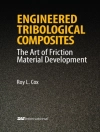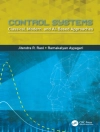The basic idea of this introduction to the finite element method is based on the concept of explaining the complex method using only one-dimensional elements. Thus, the mathematical description remains largely simple and straightforward. The emphasis in each chapter is on explaining the method and understanding it itself. The reader learns to understand the assumptions and derivations in various physical problems in structural mechanics and to critically assess the possibilities and limitations of the finite element method.
For illustration purposes, each chapter is deepened with extensively calculated and commented examples as well as with further tasks including short solutions
Tabela de Conteúdo
Introduction.- Motivation to the finite element method.- Beam element.- Analogies to the extension bar.- Bending element.- General 1D element.- Plane and spatial frame structures.- Beams with shear component.- Beams of composite material.- Nonlinear elasticity.- Plasticity.- Stability (buckling).- Dynamics.- Special elements.- Appendix.
Sobre o autor
Prof. Dr.-Ing. Markus Merkel
studied mechanical engineering at the University of Erlangen-Nuremberg and earned his doctorate there at the Chair of Engineering Mechanics. He has been a professor at Aalen University since 2004 and represents the finite element method in teaching.
Prof. Dr.-Ing. Andreas Öchsner
studied aerospace engineering at the University of Stuttgart and earned his doctorate at the University of Erlangen-Nuremberg. He has been a professor of mechanical engineering at Esslingen University of Applied Sciences since 2018 and is responsible, among other things, for training students in lightweight construction and structural simulation.












